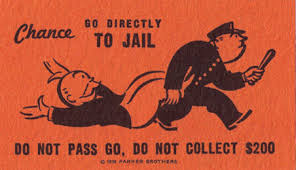 Rolling is seemingly the forgotten form of locomotion. And with good reason: it's slow and inefficient!
Once we've figured out how to get around with our legs we forget about rolling for the most part, but a little practice with the primitive pattern of rolling can do wonders for your movement base as well as your running. And yes, it may even reduce your running injury risk.
Rolling is seemingly the forgotten form of locomotion. And with good reason: it's slow and inefficient!
Once we've figured out how to get around with our legs we forget about rolling for the most part, but a little practice with the primitive pattern of rolling can do wonders for your movement base as well as your running. And yes, it may even reduce your running injury risk.
*Now, I'm not yet aware of any studies proving rolling reduces injury risk, but I do know that those who can roll move better and will have more success than those who don't.
It turns out rolling has a few cool benefits.
First, you (re)learn authentic spinal stabilization by using your head, neck, and eyes, to drive your movement. After developing proper breathing patterns, this is a crucial step.
Second, while most people have no problem tensing, bracing and gripping their way through life, I see a ton of folks who can't let go and relax. Hmm. Rolling exposes your ability to relax certain muscles while using others.
Finally, nothing looks more intimidating than a grown-up rolling on the floor in the middle of a gym. :-D
Uh, that sounds cool, but I'm not a movement geek like you.
Good point.
The underlying cause for many a poor movement issue is a dysfunctional core. By name, the core is the center of your body. (Let's just consider the core to be your spine and all of the muscles associated with it.)
You must have stability at the core if you expect to move your arms and legs properly.
Guess what's NOT likely working properly when you've got IT Band Syndrome or other running injuries?
To re-establish a functional core, rolling is the next critical step after making sure you're breathing diaphragmatically.
Here's How To Roll Properly
Dr. Perry Nickelston demonstrates nicely in the following video:
http://www.youtube.com/watch?v=UNQUivcLKPg
The devil is in the details. The biggest key is to make sure your legs are completely relaxed while you roll with the upper body. As he says:
- Look with the eyes and head.
- Reach arm across body and turn head into shoulder.
- Elongate the axis: make the axis (left) leg long – "reach"; make the axis (left) arm long – "reach."
- Stay long through the axis.
- Verbal sequence: "Reach-lift arm-look into shoulder-roll"
Who shouldn't practice rolling?
The short answer is those with significant mobility restrictions, especially people with limited neck range of motion.
If rolling is painful in any way, do not pass GO and get your pain addressed by a medical professional.
That said, sometimes when people attempt rolling for the first time, they'll complain about certain muscles tightening up – especially around the upper back/neck. Rolling should be nearly effortless, so pause when you feel the tightness happening and just breathe and relax.
Rolling is not a strength training exercise, it is a restorative movement pattern that you should practice until you can do it – then move on to the next challenge: crawling ;-)
Why You Should Try This Today
Because rolling is such a fundamental pattern to human movement - especially with regard to walking, running and rotational activities (golf, tennis, etc.) - the inability to roll can be considered a road block to reaching your movement potential.
I think nearly everyone I've ever worked with who's had running "issues" has also had problems rolling.
Get down on the floor and explore this primitive pattern. Figure it out. You may be frustrated at first that you can't roll without using your legs, but practice daily and you'll get it very quickly.
For more on adult rolling patterns click here.
